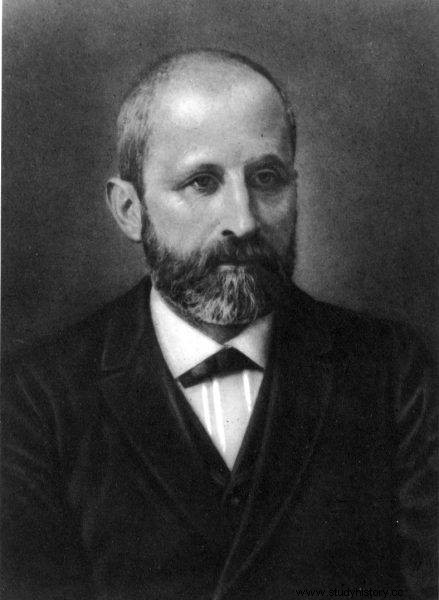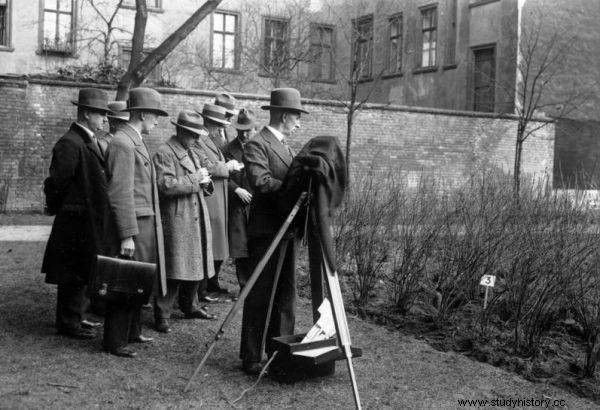"Every contact leaves a trace" - this is what Dr. Edmond Locard has become the staple of modern forensics. Known as the French Sherlock Holmes, Locard was the first scientist to set up a forensic laboratory in 1910 and commissioned it to law enforcement agencies in Lyon. From that moment on, there were no "perfect crimes" anymore ...
Behind the Locard laboratory are years of research, meticulous analyzes and innovative thoughts of scientists, officers and doctors who want to improve the catching of criminals, thereby increasing the level of general safety. Although many of these methods initially raised doubts, over time their development led to the flowering of forensic techniques allowing for more efficient catching of criminals and solving mysteries from the past.
On the trail to the killer
The nineteenth century is a time of great development of technology and science, also in the field of forensics. The rapid development of medicine encouraged scientists not only to find ways to fight disease, but also methods to improve the conduct of police investigations. For example, studies carried out on the bodies of soldiers in Malta have been able to establish that the body temperature drops at regular intervals after death which made it easier to determine the time of death.
In 1869, the Swiss researcher Fryderyk Miescher extracted nucleic acids from oil-soaked dressings. With this event, he initiated the work leading to the discovery of the structure of DNA. Differences between blood and hair samples were also started to be noticed.

In 1869, the Swiss researcher Fryderyk Miescher extracted nucleic acids from oil-soaked dressings. With this event, he initiated the work leading to the discovery of the structure of DNA.
Ballistic analyzes have also begun. In 1835, a Scotland Yard employee first noticed a cartridge flaw. It allowed for its precise identification, as it came from the factory mold from which the projectile was made.
All these methods improved the work of investigators, helping to establish the identity or mode of action of criminals. However, the two biggest milestones in investigative techniques were yet to be laid.
Fingerprints
The fingerprint as a form of signature scrolls through the pages of history. In ancient Babylon, it was used for transactions on clay tablets. This form of signature can also be found in China or Persia, and in the 17th century at the University of Bologna, Marcello Malpighi was the first to describe the appearance of fingerprints. However, it was only the 19th century that attracted the attention of scientists to the hand, thus changing the face of forensics.
The first person to use a fingerprint for identification in 1877 was William Hershell. This British official, based in India, wanted to eliminate the problem of financial fraud with which he encountered on a daily basis, while paying pensions to Indian soldiers.
The next step in the development of dactyloscopy was made by a Scottish physician, Henry Faulds. He conducted an extensive analysis of fingerprints based on research, among others the hands of identical twins. They concluded that each person has a different fingerprint that does not change throughout his life. He was also the first to suggest taking prints from the theft site, which, however, was not immediately met with great enthusiasm by the police.

The inspiration for this article is Mark Bowden's report “The Last Trope. The mystery of the disappearance of the Lyon sisters ", which has just been released by Wydawnictwo Poznańskie.
The British anthropologist Francis Galton is the last of the three modern fathers of dactyloscopy. Based on the previously created documentation of Hershell's fingerprints and scientific articles by Faulds, he conducted his own research and developed the first fingerprint classification system. In 1892, he published his thoughts and research results in the first monograph on dactyloscopy, entitled "Fingerprints". Later that year, in Argentina the first resolution of the murder of two children using fingerprints .
Unfortunately, it took some time for dactyloscopy to be included in the circle of compulsory investigative techniques used to investigate crime scenes and gather evidence to help identify the perpetrator. This happened only after World War II, although already in the 1930s many policemen used modern methods of collecting and storing prints, some of which are still practiced.
A unique genetic code
The turn of the nineteenth and twentieth centuries brought the development of many new forensic techniques, thus improving the catching and punishing of criminals. However, the biggest breakthrough was yet to come.
In 1953, two scientists, James Watson and Francis Crick, made a discovery that changed the perception of the human body. As a result of their research, they created a model of a molecule that collects information about the structure and operation of the human body. They were compiled on the basis of X-rays made by Rosalind Franklin and Maurice Wilkins. This structure is DNA, and their research work has changed the face of forensics.
The following decades brought new methods of testing deoxyribonucleic acid, including RFLP, also known as genetic fingerprint :
It is based on the analysis of the length of nucleic acid fragments cut with site-specific enzymes, ie digesting the DNA molecule in strictly defined places. The resulting DNA fragments can then be separated according to their size and presented in the form of a barcode-like pattern unique to each human.

Along with the following years, DNA testing played an increasingly important role in solving both current crimes and the so-called "Cold cases", ie matters from the past that could not be resolved before.
It was she who in 1986 contributed to the acquittal of the first person suspected of the crime, Richard Buckland. The Briton was facing a conviction for brutal rape and murder of two 15-year-olds - Lynda Mann and Dawn Ashworth . However, as a result of the research he was exonerated, and further arduous investigation led to the conviction of the perpetrator, baker Colin Pitchfork.
Along with the following years, DNA testing played an increasingly important role in solving both current crimes and the so-called "Cold cases", i.e. matters from the past that could not be resolved before. Their reopening and the analysis of the evidence gathered at that time led to the capture of the criminals, who had previously been unpunished. It also helped to solve some cases of missing persons, bringing answers that many families had been waiting for, so far uncertain about the fate of their loved ones.
Inspiration:
The article was inspired by Mark Bowden's report "The Last Trope. The mystery of the disappearance of the Lyon sisters ", which has just been released by Wydawnictwo Poznańskie.
